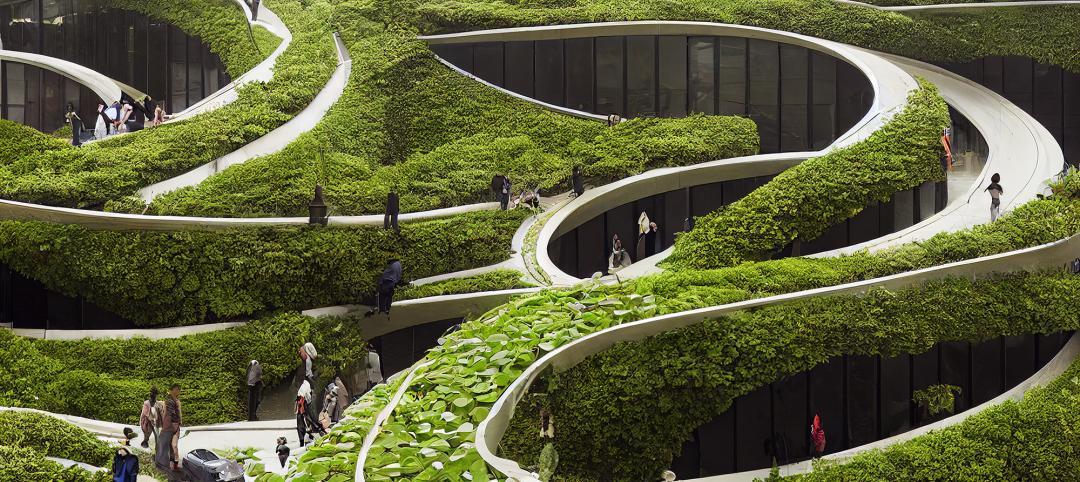DENTON (UNT), Texas — The University of North Texas has received a $2 million grant from the State Energy Conservation Office to install three wind turbines that will feed the electrical grid that provides power to UNT’s new football stadium and other buildings on the west side of Interstate 35E.
The stadium, which will open in September, is the first collegiate stadium designed to incorporate onsite renewable energy. The turbines are expected to be installed by the end of the year.
“The effort by the staff of the UNT System and the university to meet the requirements of the Department of Energy and the State Energy Conservation Office to win the grant for these new turbines underscores our commitment to creating a carbon-neutral campus,” said V. Lane Rawlins, president of UNT. “Our university has a 50-year legacy of environmental research and sustainability and we’re proud to be the first university in Texas to install wind turbines on campus. “
It is estimated that the three wind turbines will offset the energy consumption of Mean Green Village, the area of campus surrounding the new stadium, by about 6 percent and eliminate 323 metric tons of carbon dioxide being emitted annually. The turbines will be visible from I-35E and I-35W providing visual evidence of UNT’s commitment to sustainability.
A web-based monitoring system will provide details on energy production, carbon reduction statistics and empirical data that can be used for both educational and research purposes at UNT. Designed for low wind conditions, the community-scale 100kW wind turbines are well suited for the North Texas region, which has a wind speed average of approximately 12 mph.
Unlike the very large turbines generally found at wind farms, community-scale turbines are considerably smaller and ideal for municipalities, schools, neighborhoods, and universities. The approximate noise level of the turbines is 55 decibels at 40 meters (131 feet), which is equivalent to that of a normal conversation between two people.
“The construction of wind turbines at UNT will be an invaluable asset to the university and surrounding communities,” said Richard Escalante, vice chancellor for administrative services. “The reduction in carbon emissions from the use of fossil fuels will be a collective benefit for the entire North Texas region. Sustainable initiatives, such as the use of renewable energy technologies, ensure that future generations of the UNT and Denton communities are equipped with the necessary tools to continue economic expansion while simultaneously protecting the environment and human health.”
The wind turbines will be located southwest of the new stadium, and aligned approximately parallel to Bonnie Brae Street. The turbines will be on the east side of Bonnie Brae.
Design and construction of the turbines is expected to begin immediately. At its November meeting, the UNT System Board of Regents selected HKS DesignGreen for the design of the turbines and supporting structure. The construction manager will be selected shortly, according to Raynard Kearbey, UNT System associate vice chancellor for system facilities, whose team is overseeing design and construction of the stadium and wind turbines.
“These wind turbines will give UNT a trifecta of benefits,” noted Chris Mundell, sustainable design manager with HKS DesignGreen. “They will be an innovative educational tool for UNT students and faculty. The turbines also will be a symbol of sustainability for all the stadium’s spectators. Lastly, they help offset energy consumption of the new stadium, making it one of the most energy efficient in the country.”
Scheduled to open in September 2011, the new 28,000 seat stadium will feature luxury suites, an amenity-filled club level, and a Spirit Store.
The new stadium will be the centerpiece in UNT's Mean Green Village. In addition to hosting UNT events, it will serve the entire North Texas region as a venue for outdoor concerts, community events, high school games and band competitions.
The new stadium, which will replace 57-year-old Fouts Field, is designed by award-winning architects HKS Sports & Entertainment Group, the firm that designed the new Dallas Cowboys stadium. The UNT System will be seeking LEED Gold or Platinum certification. If the project is awarded LEED Platinum, it will be the first of its type to achieve this rating in the country.
Related Stories
Cultural Facilities | Aug 21, 2024
Baltimore’s National Aquarium opens 10,000-sf floating wetland that mimics the harbor’s original tidal marsh habitat
The National Aquarium in Baltimore has opened the National Aquarium Harbor Wetland, a 10,000-sf floating wetland that mimics the Inner Harbor’s original Chesapeake Bay tidal marsh habitat. Located between Piers 3 and 4 on Baltimore’s Inner Harbor, the $14 million project features more than 32,000 native shrubs and marsh grasses.
Mixed-Use | Aug 21, 2024
Adaptive reuse of a Sears store becomes luxury mixed-use housing
6 Corners Lofts at 4714 W Irving Park Road, Chicago, Ill., opened in March of 2024 as a 394,000-sf adaptive reuse project born out of a former Sears store.
Building Materials | Aug 19, 2024
Federal 'buy clean' construction materials label program unveiled
The U.S. Environmental Protection Agency announced a plan for implementing a new label program to boost American production of more climate-friendly construction materials and products. The label program will prioritize steel, glass, asphalt and concrete.
Museums | Aug 19, 2024
The Tampa Museum of Art will soon undergo a $110 million expansion
In Tampa, Fla., the Tampa Museum of Art will soon undergo a 77,904-sf Centennial Expansion project. The museum plans to reach its $110 million fundraising goal by late 2024 or early 2025 and then break ground. Designed by Weiss/Manfredi, and with construction manager The Beck Group, the expansion will redefine the museum’s surrounding site.
AEC Tech | Aug 19, 2024
Harnessing AI to revolutionize architectural design and creativity
Architects are wondering if AI will replace us. For Vessel, the gains offset the fear. We believe there is wisdom in the unattributed quote, “You won’t lose your job to AI. You will lose your job to someone using AI.”
Reconstruction & Renovation | Aug 19, 2024
Movement to protect historic buildings raises sharp criticism
While the movement to preserve historic buildings has widespread support, it also has some sharp critics with well-funded opposition groups springing up in recent years. Some opponents are linked to the Stand Together Foundation, founded and bankrolled by the Koch family’s conservative philanthropic organization, according to a column in Governing magazine.
Government Buildings | Aug 19, 2024
GSA posts new RFI for enabling energy efficiency, decarbonization in commercial buildings
The U.S. General Services Administration (GSA), in collaboration with the U.S. Department of Energy, recently released a new Request For Information (RFI) focused on enabling energy efficiency and decarbonization in commercial buildings. GSA wants to test innovative technologies through GSA’s Center for Emerging Building Technologies.
MFPRO+ New Projects | Aug 16, 2024
At 60 stories, the Paramount multifamily development will stand as Nashville’s tallest high rise
When complete, the 60-story Paramount building, at 750 feet high, will be the tallest high rise tower in Nashville, Tenn., surpassing the city’s current record holder, the 617-foot AT&T Building. The $390 million Paramount project recently launched condo sales after securing more than $230 million in construction financing.
Urban Planning | Aug 15, 2024
New York City begins first large-scale porous pavement installation
New York City is installing its first large-scale porous pavement installation along seven miles of roadway in Brooklyn. The project will keep 35 million gallons of stormwater out of the combined sewer system each year, according to a news release.
Urban Planning | Aug 15, 2024
The magic of L.A.’s Melrose Mile
Great streets are generally not initially curated or willed into being. Rather, they emerge organically from unintentional synergies of commercial, business, cultural and economic drivers. L.A.’s Melrose Avenue is a prime example.
















